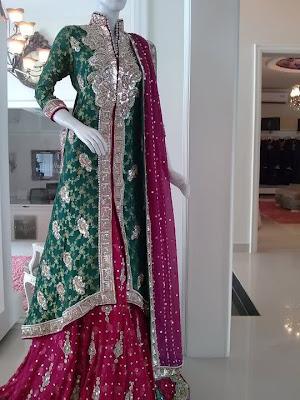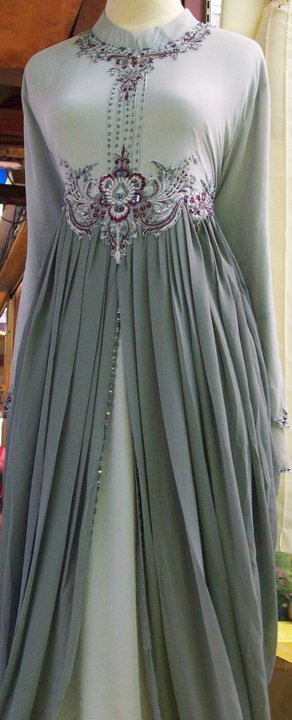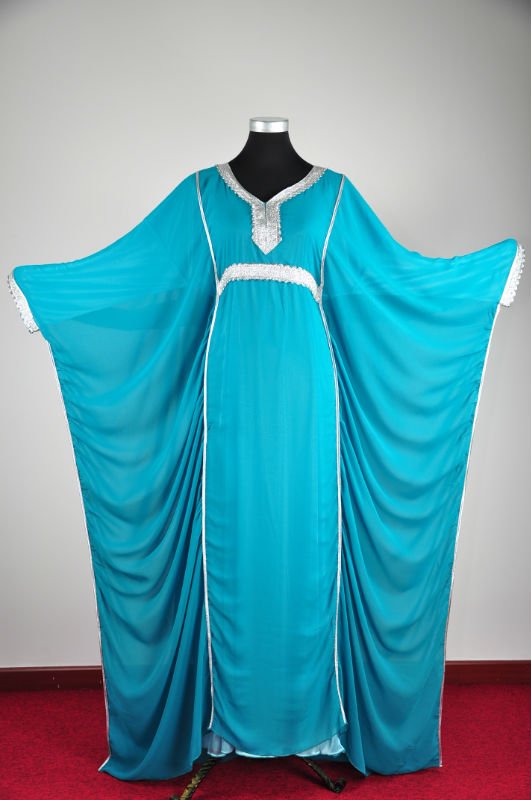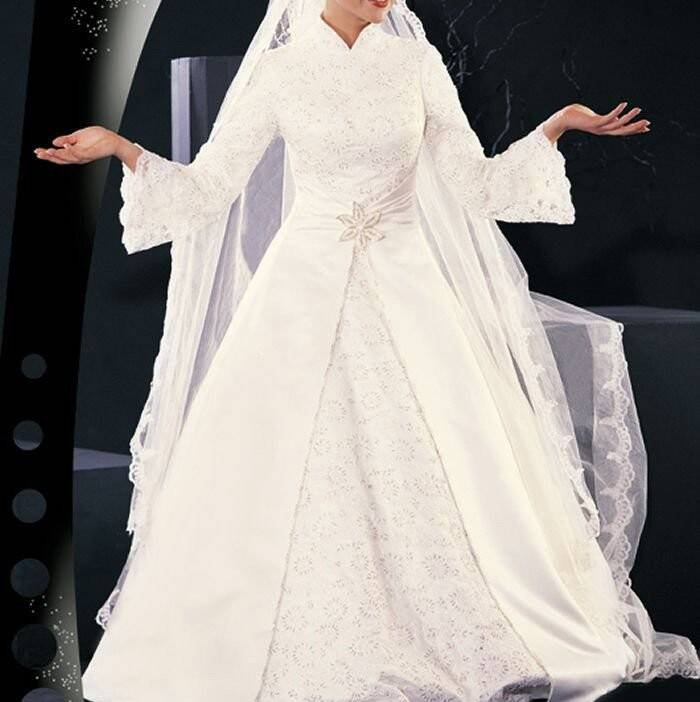About Islamic Dresses
Source (google.com.pk)
No subject seems to receive more attention as an issue unique to Muslims than that of women’s dress. Muslims and non-Muslims alike dwell on this issue, using women’s appearances to categorize others in an effort to understand them. In some instances, the dress of the Muslim woman ends up meaning more to others than it does to the woman herself with often far-reaching political and social implications. Examining the reasons for such obsession is beyond the scope of this position paper, but deserves consideration nevertheless, as we ask ourselves why so many people are so preoccupied with the appearance of Muslim women.
Our purpose here is to at least develop a basic understanding of this issue from the point of view of the Islamic texts, that is, the Qur’an and then hadith. We are not interested in coming to conclusions that result in a set of rules on how to dress. This has been done in numerous books and articles written over the centuries, including many authored very recently. Rather, we seek to understand the spirit and focus of the original texts to get an overall sense of the message being conveyed. In general, the overriding principle that comes through is one of modesty for both men and women.
Qur'anic Text
From Yusuf Ali or Muhammad Asad translations:
Say to the believing men that they should lower their gaze and guard their modesty: that will make for greater purity for them: and God is well acquainted with all that they do.
And say to the believing women that they should lower their gaze and guard their modesty; that they should not display their zeenah (charms, or beauty and ornaments) except what (must ordinarily) appear thereof; that they should draw their khimar (veils) over their bosoms and not display their zeenah except to their husbands, their fathers .... and that they should not strike their feet so as to draw attention to their hidden zeenah (ornaments). (24:31-32)
O Prophet! Tell your wives and daughters and the believing women that they should draw over themselves their jilbab (outer garments) (when in public); this will be more conducive to their being recognized (as decent women) and not harassed. But God is indeed oft-forgiving, most merciful. (33:59)
And know that women advanced in years, who no longer feel any sexual desire incur no sin if they discard their thiyab (outer garments), provided they do not aim at a showy display of their zeenah (charms or beauty). But it is better for them to abstain (from this); and God is all-hearing, all-knowing. (24:60)
These are the only verses which address the issue of clothing so specifically. Clearly, the basic principle is that of modesty. The first verse emphasizes the importance of one guarding her or his modesty, lowering one’s gaze in order to remain pure. This means that, in order for women and men to have respectful relationships (such as at work or school, etc.) they must focus on modesty in their behavior. This is enhanced by dressing in a way that reinforces one’s image as a modest person. It must be emphasized that behavior and appearance are both important in setting the tone of respectful interaction between men and women.
In addition, the second verse shows that the purpose of covering oneself is to "be recognized (as decent women) and not harassed." Many women who cover their hair and dress modestly do notice that men are more respectful and people are more inquisitive about their faith, so they are "recognized" not just as decent women but also as Muslims. Occasionally, women who cover their hair may also experience harassment and discrimination because of stereotyping and misunderstandings about Islam and women.
Interestingly, the Qur’an is really not that explicit about the exact definition of modest dress. By reading the Qur’anic verses above, women are advised to cover their breasts and put on their outer garments in a way that enables them to avoid harassment. In addition, women are advised not to draw attention to their "beauty" (zeenah). This term has been translated as both beauty and ornaments (as women used to strike their feet to draw attention to hidden ornaments such as ankle bracelets). Of note is that the Qur’an uses the term zeenah elsewhere, perhaps showing that in different contexts the word has slightly different meanings:
O Children of Adam! Wear your beautiful apparel (zeenah) at every time and place of prayer…(7:31)
The exact rules defining women’s dress have been determined based on interpretation of these verses and incorporation of concepts established in hadith. The inclusion of a head covering is derived from interpretation of the word khimar in 24:31 above. Most translators and commentators agree that this was a loose scarf worn at the time of the Prophet (pbuh) which covered a woman’s head, neck and possibly shoulders, leaving the rest exposed. Women were thus ordered to use the khimar to cover their breasts. Naturally, a woman would continue to cover her neck, head and shoulders and would then also cover her breast. This understanding of the khimar as a head-covering explains why Muslims believe that the Qur’an tells us to cover our hair. The injunction, however, regarding covering the hair in addition to everything else is implied, not specified in the Qur’an.
In addition, the verse says not to display one’s zeenah except to husbands, fathers, sons, etc. except "what naturally appears thereof". Most scholars writing on the subject consider a woman’s chest, hips, legs, neck (basically her whole body) as zeenah, which should thus be covered. Yet, as mentioned above, the Qur’an itself reveals that, in different settings, the word may have different implications; also, the (perhaps intentional) lack of specificity in defining zeenah may actually allow for differing interpretations based on a variety of circumstances.
Similarly, traditional interpretation considers the phrase "what naturally appears thereof" (illa ma zahara minha) to be limited to the hands, feet and face (although some feel that the face is also part of a woman’s beauty and should be covered). Again, when referring to Qur’an alone, the exact determination as to what naturally or ordinarily appears is left unclear.
In the second verse (33:59), the word jilbab refers to outer garments, used to cover in a way that lends oneself to be recognized and not harassed. The jilbab was commonly understood to mean loose fitting clothing and, more specifically, a long loose dress or overcoat worn by many Muslim women today. But again, the focus of the verse is on the result, avoiding harassment and preserving one’s dignity, and not on the details of the actual article of clothing.
The basic message and instruction expressed in the Qur’an is for Muslims to act modestly, dress modestly, and avoid drawing attention to oneself, especially those features that are physically attractive and perhaps enticing to the opposite sex. This applies for both men and women.
The Term "Hijab"
Literally, the word hijab means "curtain". In the Qur’an the term hijab is not used as a reference to women’s clothing; rather, it was the screen behind which the Muslims were told to address the Prophet’s wives. (The term is also used to describe the "screen" separating God from Moses, as he received divine revelation.) When the Prophet’s wives went out, the screen consisted of a veil over their face. It does not appear that covering the face was adopted by the other Muslim women at the time since it was a special injunction for the Prophet’s wives as is clear in the verses below:
And (as for the Prophet’s wives) when you ask for anything you want (or need), ask them from behind a hijab (screen), that makes for greater purity of your hearts. (33:53)
O wives of the Prophet! You are not like any of the (other) women: If you do fear (God) be not too complaisant of speech, lest one in whose heart is a disease should be moved with desire: but speak with a speech (that is) just. (33:32)
Among Muslims today, hijab refers to the head scarf worn by many women. It is a term used to distinguish between women who cover their hair (muhajabat) and those who do not, even if the rest of their clothes are equally modest.
Finally, the Qur’an also talks about our clothing as something both to cover our nakedness and serve as an adornment, reflecting the beauty of God’s creation. But, as in the verses above, it is behavior and attitude that are most important. Regardless of how we dress, we must have faith and taqwa, God consciousness or righteousness:
O you Children of Adam! We have bestowed libasan (clothing or raiment) on you to cover your nakedness and as a thing of beauty. But the raiment of righteousness (taqwa), that is the best. Such are the signs of God, that they may receive admonition. (7:26)
O Children of Adam! Wear your beautiful apparel (zeenah) at every time and place of prayer: eat and drink: but waste not by excess, for God loves not the wasters. (7:31)
Those are all of the verses in the Qur’an which speak to the issue of dress
Islamic Dresses Abaya Designs 2014 Dress Collection Dubai Styles Fashion Pics Photos Images Wallpapers
Islamic Dresses Abaya Designs 2014 Dress Collection Dubai Styles Fashion Pics Photos Images Wallpapers

Islamic Dresses Abaya Designs 2014 Dress Collection Dubai Styles Fashion Pics Photos Images Wallpapers

Islamic Dresses Abaya Designs 2014 Dress Collection Dubai Styles Fashion Pics Photos Images Wallpapers

Islamic Dresses Abaya Designs 2014 Dress Collection Dubai Styles Fashion Pics Photos Images Wallpapers

Islamic Dresses Abaya Designs 2014 Dress Collection Dubai Styles Fashion Pics Photos Images Wallpapers

Islamic Dresses Abaya Designs 2014 Dress Collection Dubai Styles Fashion Pics Photos Images Wallpapers

Islamic Dresses Abaya Designs 2014 Dress Collection Dubai Styles Fashion Pics Photos Images Wallpapers

Islamic Dresses Abaya Designs 2014 Dress Collection Dubai Styles Fashion Pics Photos Images Wallpapers

Islamic Dresses Abaya Designs 2014 Dress Collection Dubai Styles Fashion Pics Photos Images Wallpapers

Islamic Dresses Abaya Designs 2014 Dress Collection Dubai Styles Fashion Pics Photos Images Wallpapers

Islamic Dresses Abaya Designs 2014 Dress Collection Dubai Styles Fashion Pics Photos Images Wallpapers

Islamic Dresses Abaya Designs 2014 Dress Collection Dubai Styles Fashion Pics Photos Images Wallpapers

Islamic Dresses Abaya Designs 2014 Dress Collection Dubai Styles Fashion Pics Photos Images Wallpapers
Islamic Dresses Abaya Designs 2014 Dress Collection Dubai Styles Fashion Pics Photos Images Wallpapers

Islamic Dresses Abaya Designs 2014 Dress Collection Dubai Styles Fashion Pics Photos Images Wallpapers

Islamic Dresses Abaya Designs 2014 Dress Collection Dubai Styles Fashion Pics Photos Images Wallpapers

Islamic Dresses Abaya Designs 2014 Dress Collection Dubai Styles Fashion Pics Photos Images Wallpapers

Islamic Dresses Abaya Designs 2014 Dress Collection Dubai Styles Fashion Pics Photos Images Wallpapers

Islamic Dresses Abaya Designs 2014 Dress Collection Dubai Styles Fashion Pics Photos Images Wallpapers
Islamic Dresses Abaya Designs 2014 Dress Collection Dubai Styles Fashion Pics Photos Images Wallpapers

Islamic Dresses Abaya Designs 2014 Dress Collection Dubai Styles Fashion Pics Photos Images Wallpapers

No comments:
Post a Comment